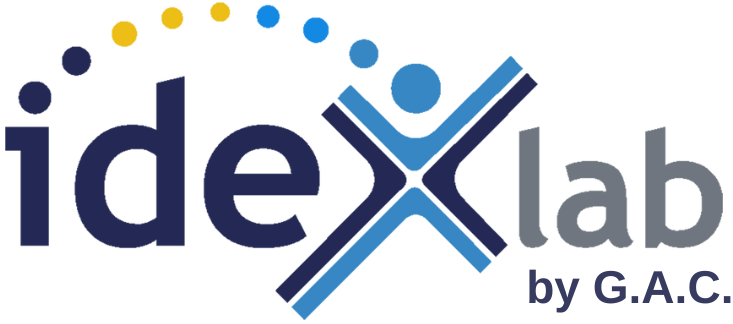Open Source and Open Innovation
We are often asked the difference between Open Innovation and Open Source. And many people confound the two. Let us try to clarify the links between these notions. We will take the opportunity to introduce others (Open Hardware, Open Data, Open Access etc.)
Open Source
Let’s start with the Open Source movement, since it precedes the Open Innovation. This movement was born in the ‘80s around MIT in the United States. It is a reaction to the rise of software vendors emerging in the ’70s. They develop software irrespective of hardware manufacturers and sell it against licenses. So they protect their software and it is often impossible to change what they have developed. Richard Stallman, then a researcher at MIT, reacts against what is a trend opposite to the ‘supporting and sharing’ philosophy of the community of developers and creates a project called GNU, aiming to develop a “free” operating system. He creates a foundation (Free Software Foundation) and writes a manifesto to encourage other developers to join. The first visible success of this initiative will be the Linux operating system which is used today, for example, in all smartphones based on Android.
A few years later, in 1998, the Open Source Initiative (OSI) was born in California. This initiative is especially designed to remove the ambiguity of the English term “free”, which means “libre” (freedom) but also “gratis” (zero price). Open Source promoters don’t deny the economy around the software. Instead, it will rely on paid services (maintenance, improvements, adaptations, etc.) provided together with the software whose licenses are free. OSI clarifies the definition of Open Source and codifies the requirements for a license to be considered compatible. For example, it must allow
modifications and derived works, and must allow them to be distributed under the same terms as the license of the original software.
Open Innovation
The term Open Innovation appeared in 2003 in a book published by Henry Chesbrough. The Open Innovation combines the practice of innovation relying deliberately outside the company in order to improve efficiency or to better promote innovation efforts internally. Chesbrough in his book makes a synthesis of practices which are not new. For example, the use of external knowledge via “gatekeepers” is already identified by Thomas Allen in the ‘60s. Von Hippel in the ‘80 identifies the advanced users (“lead users”) as a key resource to develop disruptive innovations. Overall, Open Innovation promotes the development of flow of knowledge and ideas during the innovation process:
- between the company and its environment, in order to allow better sharing of risks and rewards with external partners;
- within the company itself, in order to allow greater involvement of all company employees.
We believe that the real novelties related to Open Innovation were not yet fully in action when the term was coined: we should rather focus on the most recent developments of information and communication technologies to find new tools and practices. They rely on social networks, e-commerce, semantic web technologies, free access data (Open Access, Open Data), etc.
The Differences between Open Source and Open Innovation
From the preceding introductions, it is clear that Open Source and Open Innovation are very different concepts. Let’s mention four important differences.
- First of all, regarding the objects involved: software for the Open Source; any type of product or service for the Open Innovation. This difference could partially fade away in the coming years since the production of physical objects is now tackled by derivatives of the Open Source movement such as the Open Source Appropriate Technologies (OSTA) or, more recently, by the Open Source Hardware.
- Next, regarding the economic and legal framework proposed. The Open Source provides a framework for economic exchange and an intellectual property policy. Open Innovation leaves these questions totally open. Nothing, for example, defines the conditions for participation of a “lead-user” or of an expert to an Open Innovation challenge.
- The weight of the actors. In Open Innovation, the terms of exchange above are often dictated by a large company or defined though a specialized intermediary. These intermediaries don’t really exist in the Open Source since the production and provision of the code may be done via computer servers (forges, repositories).
- Finally, the diversity of Open Innovation contexts is huge whereas Open Source covers software development or improvement. Companies use Open Innovation for very upstream projects (ideation, ideas competition), as well as problem solving, improving existing products, mounting research projects, etc.
Common points in Open Source and Open Innovation
But there are also strong commonalities between the two. We will mention four.
- The displacement of company borders. Both approaches call into question the boundaries of the traditional business, emphasizing collaboration, sharing, decentralization. They lower the barriers of language and geography (although there is a strong dominance of English and the United States), thus allowing a global flow of ideas and information;
- Open Innovation and Open Source value what is today called collective intelligence, recognizing that “the whole is greater than the sum of its parts”, that diversity, independence and decentralization of opinions and ideas allowed by the internet provide access to a richness which was difficult to implement before;
- An important element of motivation is the desire to work for the common good. This concern is probably stronger in the Open Source movement (and especially in the Free Software), but we often find this motivation among participants in Open Innovation processes, whether experts, employees or individuals;
- Finally, the information and communication technologies play a key role in both the access to information and knowledge, in the production and proliferation of data, and in the circulation of ideas. The Open Access movement promotes unrestricted online access to peer-reviewed scholarly research. This enables a better flow of scientific ideas that need to be read and criticized in order to progress.
Possible convergences?
Are the difference meant to disappear and could the two notions, Open Source and Open Innovation, converge? We’ve seen that Open Source initially focused on the software, but it inspires other movements around products/hardware. On the other hand, the total absence of a common reference framework in Open Innovation in the current state is a weakness. It is today compensated, for example, by intermediaries, but it would probably be appropriate to launch a reflection on some basic rules aiming for example to protect the interests of the contributors to ideas, information and knowledge.
We bet that the commonalities that unite the two practices and are expressed in many other emerging practices are a strong enough base to make the theory and practice of Open Innovation evolve. Open Innovation is still young and lacking guidelines.
Pour en apprendre plus sur l’Open Innovation et son fonctionnement, n’hésitez pas à jeter un oeil à notre article dédié









